Search Result
Results for "
gastrointestinal tract
" in MedChemExpress (MCE) Product Catalog:
2
Biochemical Assay Reagents
8
Isotope-Labeled Compounds
| Cat. No. |
Product Name |
Target |
Research Areas |
Chemical Structure |
-
- HY-144035
-
|
|
GCGR
|
Cancer
|
|
GLP-1R agonist 4 is a potent agonist of GLP-1R. Glucagon-like peptide-1 (GLP-1) is an intestinal hypoglycemic hormone secreted by L-cells in the lower gastrointestinal tract. GLP-1R agonist 4 has the potential for the research of diabetes (extracted from patent WO2019239319A1, compound 96) .
|
-
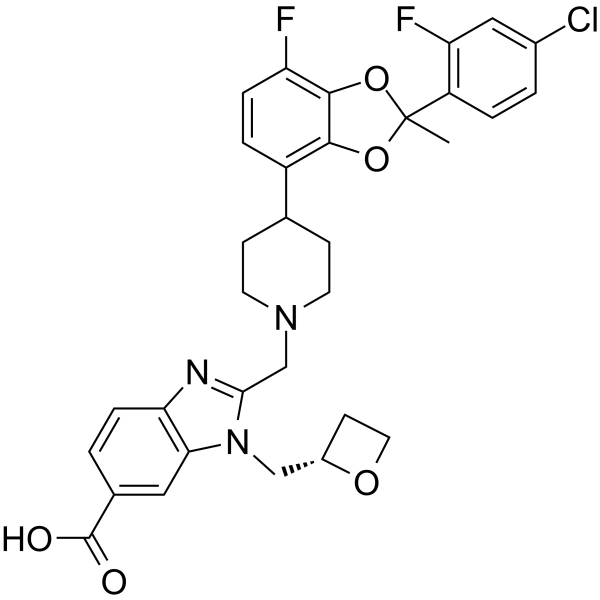
-
- HY-108288
-
|
CP 47904
|
Beta-lactamase
Antibiotic
Bacterial
|
Infection
|
|
Sulbactam pivoxil is a proagent of sulbactam. Sulbactam is a β-lactamase inhibitor which poorly adsorbed from gastrointestinal tract. Sulbactam pivoxil has a better absorption than the parent agent and provides high serum levels after oral administration .
|
-
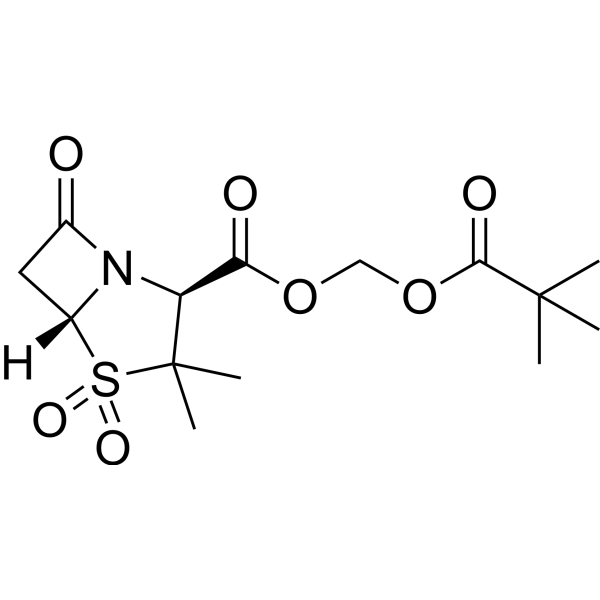
-
- HY-144034
-
|
|
GCGR
|
Metabolic Disease
|
|
GLP-1R agonist 3 is a potent agonist of GLP-1R. GLP-1R agonist 3 is a thickened imidazole derivative compound. Glucagon-like peptide-1 (GLP-1) is an intestinal hypoglycemic hormone secreted by L-cells in the lower gastrointestinal tract. GLP-1R agonist 3 has the potential for the research of diabetes (extracted from patent WO2021197464A1, compound 1) .
|
-

-
- HY-105263
-
|
|
Motilin Receptor
|
Metabolic Disease
|
|
EM574 is a potent motilin receptor agonist in the human gastric antrum and rabbit gastrointestinal tract in vitro. EM574 is an erythromycin derivative .
|
-
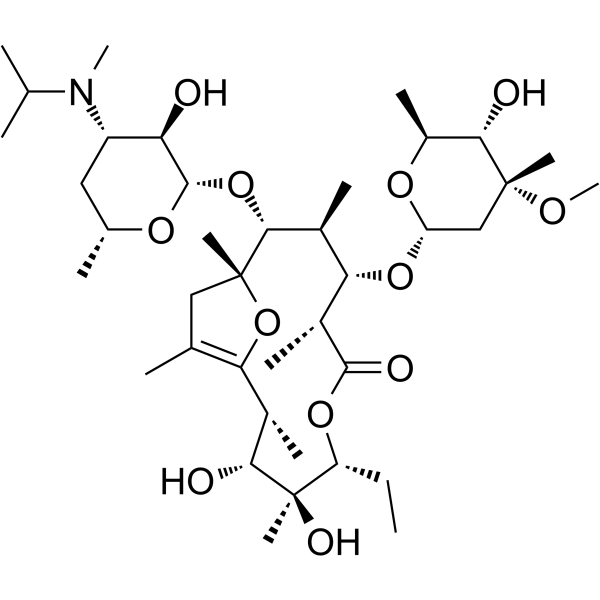
-
- HY-B0455B
-
|
SC47111A (aspartate)
|
Bacterial
Antibiotic
|
Infection
|
|
Lomefloxacin (SC47111A) aspartate is a broad-spectrum quinolone antibiotic, with antimicrobial activity. Lomefloxacin aspartate can be used for researching respiratory tract infections, genitourinary infections, gastrointestinal infections, ENT infections, etc. .
|
-
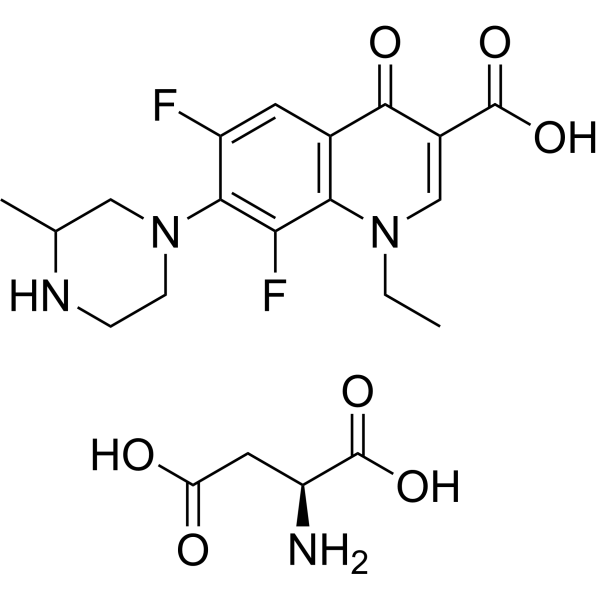
-
- HY-144033
-
|
|
GCGR
|
Metabolic Disease
|
|
GLP-1R agonist 1 is a potent agonist of GLP-1R. GLP-1R agonist 1 is a thickened imidazole derivative compound. Glucagon-like peptide-1 (GLP-1) is an intestinal hypoglycemic hormone secreted by L-cells in the lower gastrointestinal tract. GLP-1R agonist 1 has the potential for the research of diabetes (extracted from patent WO2021197464A1, compound 4) .
|
-
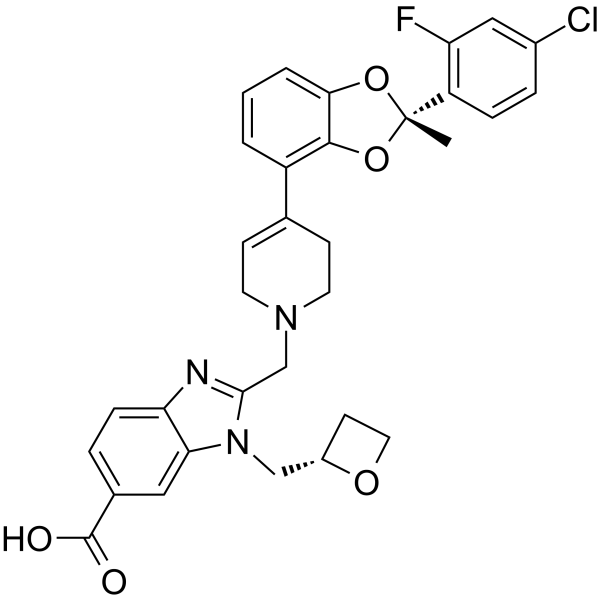
-
- HY-116016
-
|
L-DOPA ethyl ester; Levodopa ethyl ester
|
Dopamine Receptor
Drug Metabolite
|
Neurological Disease
|
|
Etilevodopa (L-Dopa ethyl ester), an ethyl-ester proagent of Levodopa, is rapidly hydrolyzed to Levodopa and ethanol by nonspecific esterases in the gastrointestinal tract. Etilevodopa is used for the treatment of Parkinson disease (PD). Levodopa is the direct precursor of dopamine and is a suitable proagent as it facilitates CNS penetration and delivers dopamine .
|
-

-
- HY-116016A
-
|
L-DOPA ethyl ester hydrochloride; Levodopa ethyl ester hydrochloride
|
Dopamine Receptor
Drug Metabolite
|
Neurological Disease
|
|
Etilevodopa (L-Dopa ethyl ester) hydrochloride, an ethyl-ester proagent of Levodopa, is rapidly hydrolyzed to Levodopa and ethanol by nonspecific esterases in the gastrointestinal tract. Etilevodopa hydrochloride is used for the treatment of Parkinson disease (PD). Levodopa is the direct precursor of dopamine and is a suitable proagent as it facilitates CNS penetration and delivers dopamine .
|
-
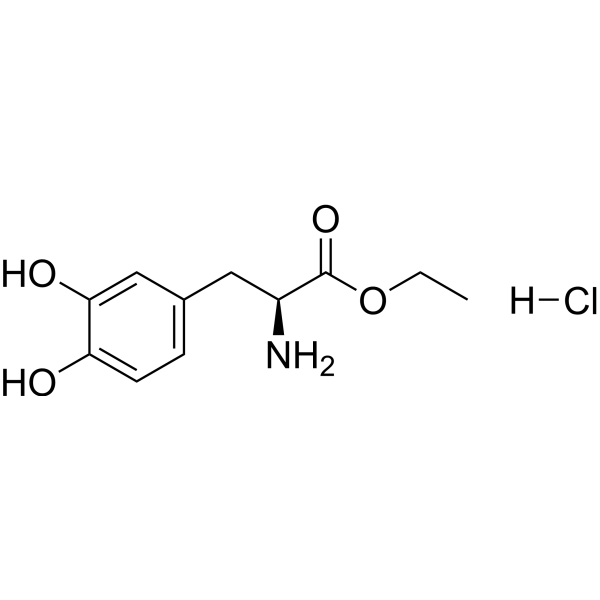
-
- HY-101014
-
|
|
|
|
|
Octanoylcarnitine chloride is a homolog of acetylcarnitine chloride. Octanoylcarnitine chloride can enhance absorption of drugs from gastrointestinal tract .
|
-
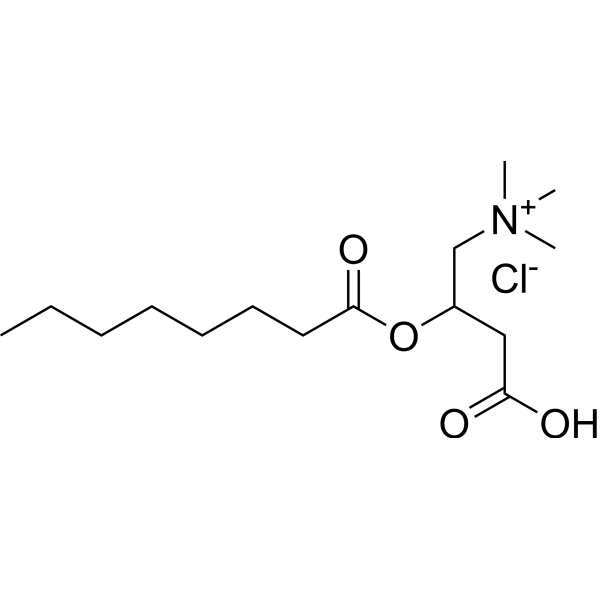
-
- HY-108283
-
|
AA 149; Supacal
|
Others
|
Inflammation/Immunology
|
|
Trepibutone (AA 149) increases secretion of bile and pancreatic juice, and accelerates flaccidity of the smooth muscle in the gastrointestinal tract. Trepibutone can be used for the research of cholecystitis and functional gastrointestinal disorders .
|
-
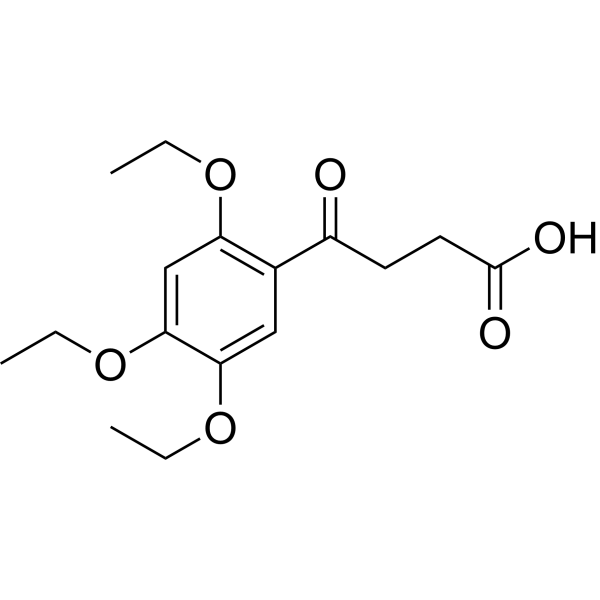
-
- HY-101744
-
|
|
Autophagy
|
Inflammation/Immunology
|
|
Ipsalazide is a novel sulfasalazine analog designed to release 5-aminosalicylic acid and a nontoxic carrier molecule in the gastrointestinal tract.
|
-
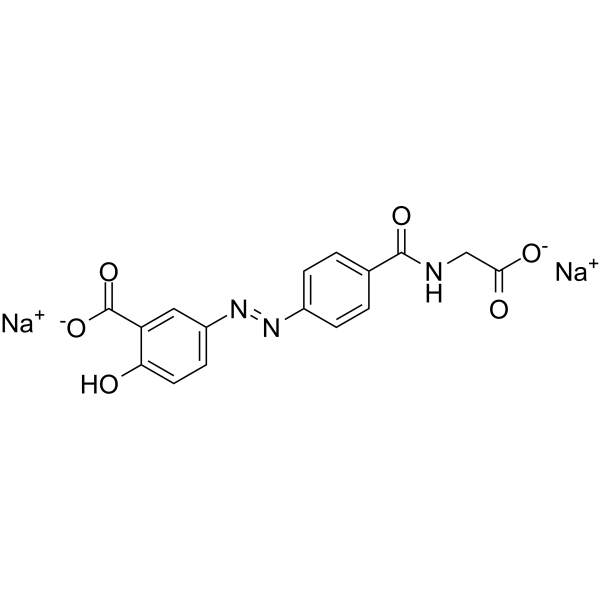
-
- HY-G0008
-
|
Mebeverine metabolite O-desmethyl Mebeverine alcohol
|
Adrenergic Receptor
Drug Metabolite
|
Metabolic Disease
|
|
O-Desmethyl Mebeverine alcohol is a metabolite of Mebeverine, which is a potent α1 repector inhibitor, causing relaxation of the gastrointestinal tract.
|
-
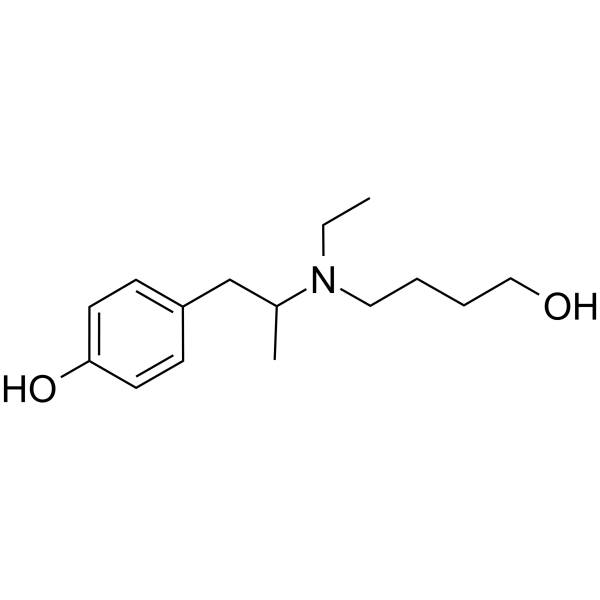
-
- HY-G0008A
-
|
Mebeverine metabolite O-desmethyl Mebeverine alcohol hydrochloride
|
Adrenergic Receptor
Drug Metabolite
|
Metabolic Disease
|
|
O-Desmethyl Mebeverine alcohol hydrochloride is a metabolite of Mebeverine, which is a potent α1 repector inhibitor, causing relaxation of the gastrointestinal tract.
|
-
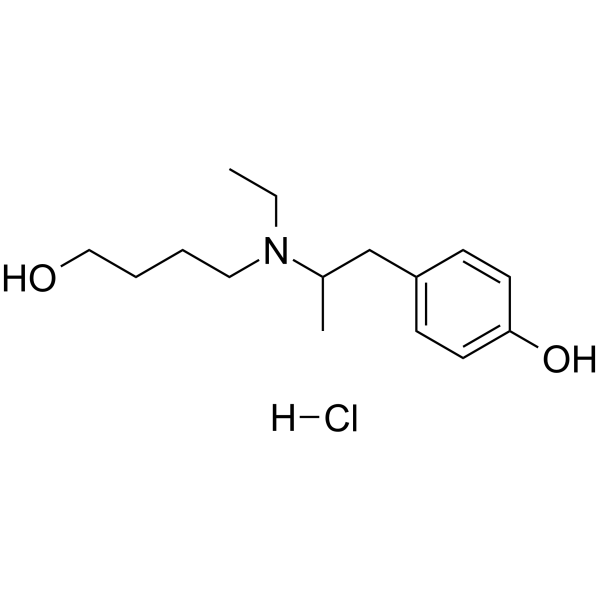
-
- HY-B2196
-
|
|
Bacterial
Antibiotic
|
Infection
Metabolic Disease
|
|
Gastric mucin is a large glycoprotein which is thought to play a major role in the protection of the gastrointestinal tract from acid, proteases, pathogenic microorganisms, and mechanical trauma.
|
-
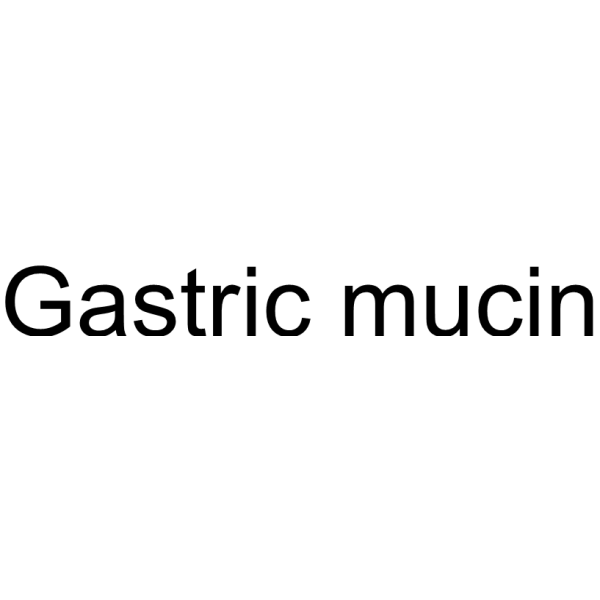
-
- HY-14739
-
|
ABT-335
|
PPAR
COX
|
Cardiovascular Disease
|
|
Choline Fenofibrate (ABT-335), a choline salt of Fenofibric acid (HY-B0760), releases free Fenofibric acid in the gastrointestinal tract. Fenofibric acid is a PPAR activator with antihyperlipidemic effect .
|
-
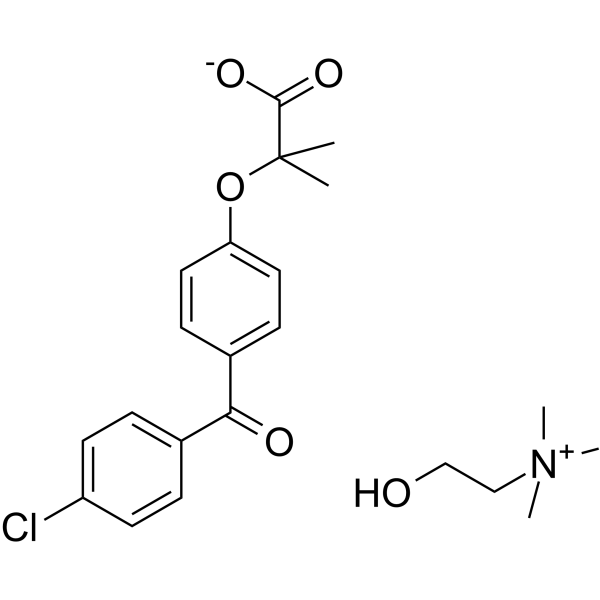
-
- HY-P3021
-
|
|
Bacterial
Biochemical Assay Reagents
|
Infection
|
|
Human milk lysozyme is the lysozyme found in human milk. Human milk lysozyme is thought to be a key defense factor in protecting the gastrointestinal tract of newborns against bacterial infection .
|
-

-
- HY-B0455A
-
|
SC47111A
|
Bacterial
Antibiotic
|
Infection
|
|
Lomefloxacin (SC47111A) is a broad-spectrum quinolone antibiotic, with antimicrobial activity. Lomefloxacin is used for the research of respiratory tract infections, genitourinary infections, gastrointestinal infections, ENT infections, etc. .
|
-
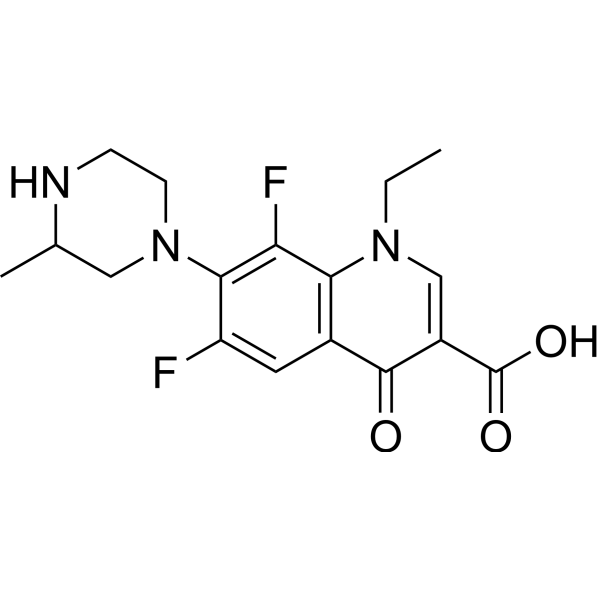
-
- HY-B0455
-
|
SC47111A hydrochloride
|
Bacterial
Antibiotic
|
Infection
|
|
Lomefloxacin (SC47111A) hydrochloride is a broad-spectrum quinolone antibiotic, with antimicrobial activity. Lomefloxacin hydrochloride is used for the research of respiratory tract infections, genitourinary infections, gastrointestinal infections, ENT infections, etc. .
|
-
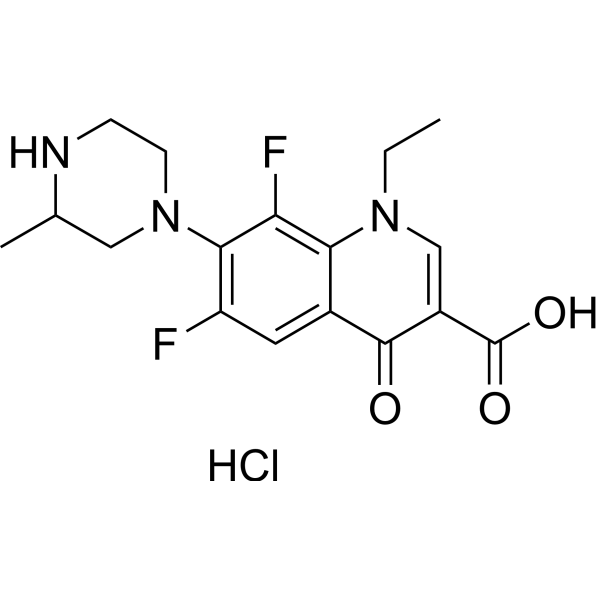
-
- HY-B0035S
-
|
Sulfadimidine-d4; Sulfadimerazine-d4
|
Bacterial
|
Infection
|
|
Sulfamethazine-d4 is a deuterium labeled Sulfamethazine (Sulfadimidine). Sulfamethazine is an antimicrobial that is widely used to treat and prevent various animal diseases (such as gastrointestinal and respiratory tract infections)[1][2].
|
-

-
- HY-16102
-
|
|
Bacterial
Antibiotic
|
Infection
|
|
Bismuth subcitrate potassium is an antibiotic against 12 C. pyloridis strains with MIC50 of 8 ug/ml . Bismuth subcitrate potassium is used to treat diseases of the upper gastrointestinal tract infected with Helicobacter pylori .
|
-
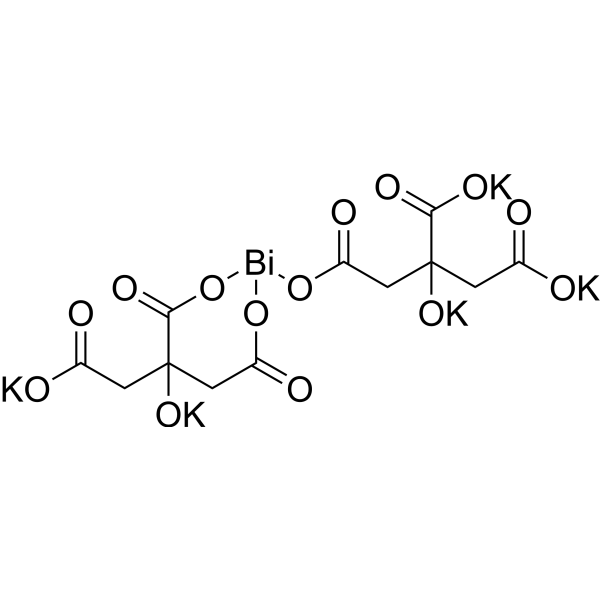
-
- HY-14153AS
-
|
SDZ-HTF-919-13C,d3; HTF-919-13C,d3
|
Isotope-Labeled Compounds
5-HT Receptor
|
Neurological Disease
Metabolic Disease
|
|
Tegaserod- 13C,d3 (maleate) is the 13C- and deuterium labeled Tegaserod (maleate). Tegaserod maleate is a selective 5-HT4 receptor partial agonist and a 5-HT2B receptor antagonist. Tegaserod maleate exhibits a promotile effect throughout the gastrointestinal (GI) tract[1][2][5].
|
-

-
- HY-14149A
-
|
R 51619 monohydrate; (±)-Cisaprid monohydrate
|
5-HT Receptor
|
Neurological Disease
Metabolic Disease
|
|
Cisapride monohydrate is an orally and potent 5-HT4 receptor agonist and hERG inhibitor. Cisapride monohydrate is an prokinetic agent which facilitates or restores motility throughout the length of the gastrointestinal tract. Cisapride monohydrate stimulates gastrointestinal motor activity through an indirect mechanism involving the release of acetylcholine mediated by postganglionic nerve endings in the myenteric plexus of the gut .
|
-

-
- HY-N1425
-
|
|
|
|
|
Tiliroside, a glycosidic flavonoid, possesses anti-diabetic activities. Tiliroside is a noncompetitive inhibitor of α-amylase with a Ki value of 84.2 μM. Tiliroside inhibits carbohydrate digestion and glucose absorption in the gastrointestinal tract .
|
-

-
- HY-109519
-
|
|
Others
|
Others
|
|
Simethicone is an orally active defoamer. Simethicone reduces the surface tension of air bubbles in the gastrointestinal tract, causing them to be expelled by vomiting, exhalation or absorption into the bloodstream. Simethicone has potential applications in flatulence and colic .
|
-

-
- HY-B0035
-
|
Sulfadimidine; Sulfadimerazine
|
Bacterial
Antibiotic
|
Infection
|
|
Sulfamethazine (Sulfadimidine) is an antimicrobial that is widely used to treat and prevent various animal diseases (such as gastrointestinal and respiratory tract infections). In China and the European Commission, the maximum residue level for Sulfamethazine in animal product is set at 100 µg/kg .
|
-
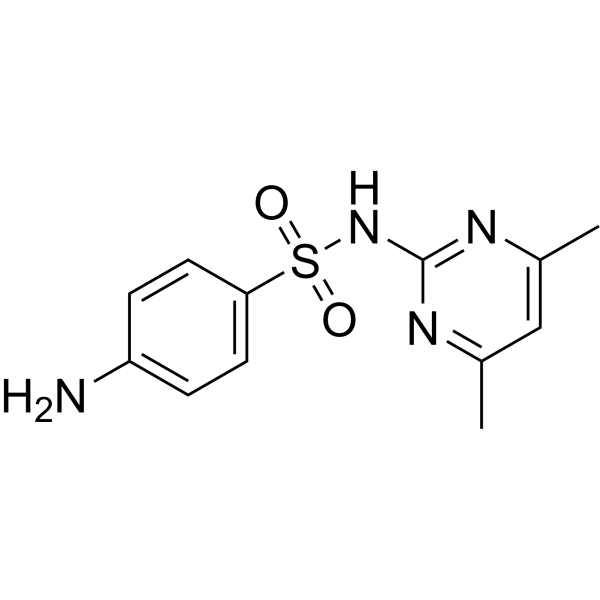
-
- HY-B0035A
-
|
Sulfadimidine sodium; Sulfadimerazine sodium
|
Bacterial
Antibiotic
|
Infection
|
|
Sulfamethazine sodium (Sulfadimidine sodium) is an antimicrobial that is widely used to treat and prevent various animal diseases (such as gastrointestinal and respiratory tract infections). In China and the European Commission, the maximum residue level for Sulfamethazine sodium in animal product is set at 100 µg/kg .
|
-
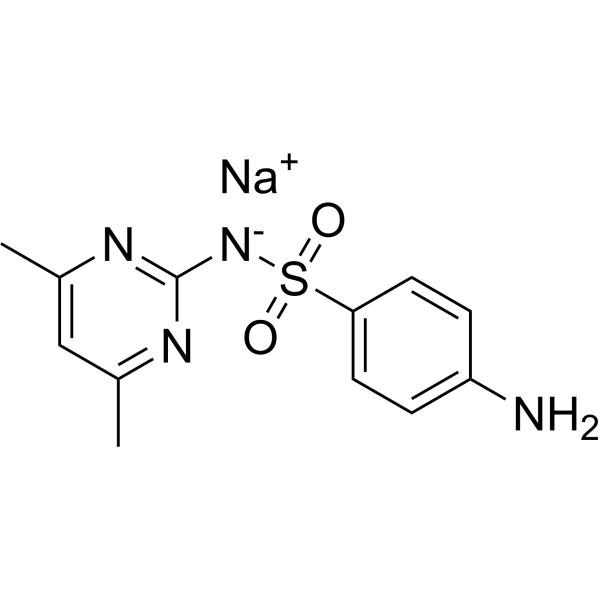
-
- HY-A0118
-
|
NKTR-118; AZ-13337019
|
Opioid Receptor
|
Neurological Disease
|
|
Naloxegol (NKTR-118; AZ-13337019) is a μ-opioid-receptor antagonist. Naloxegol inhibits opioid binding in μ-opioid receptors in the gastrointestinal tract and effective for alleviating opioid-induced constipation .
|
-
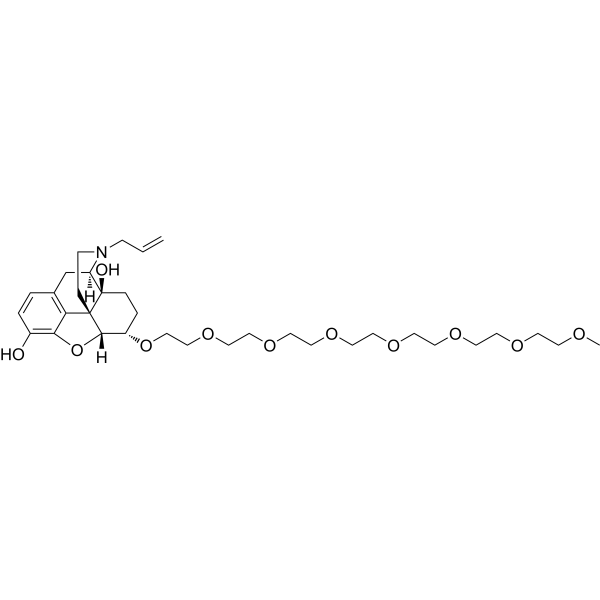
-
- HY-13831
-
|
BMS-646786
|
P2Y Receptor
|
Neurological Disease
Cancer
|
|
BPTU (BMS-646786) is a non-nucleotide P2Y1 receptor allosteric antagonist with antithrombotic activity. BPTU is able to block the P2Y1 receptor located at the neuromuscular junction of the gastrointestinal tract .
|
-
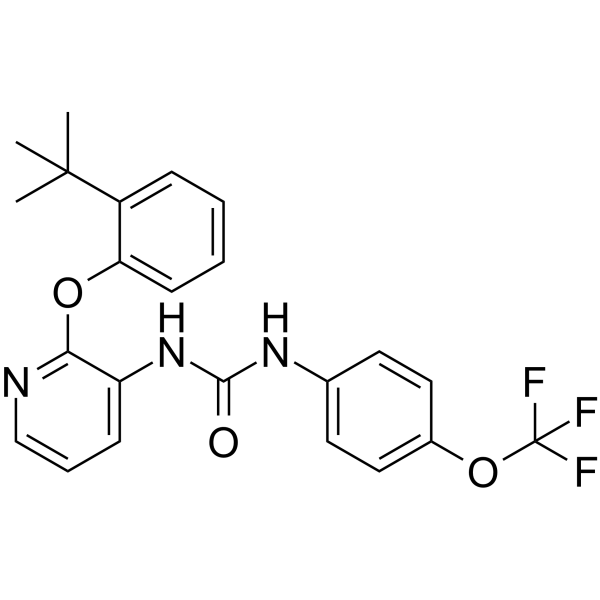
-
- HY-111613
-
|
|
Calcium Channel
|
Cancer
|
|
Pinaverium bromide is an L-type calcium channel blocker with selectivity for the gastrointestinal tract, effectively relieves pain, diarrhea and intestinal discomfort, provides good therapeutic efficacies without significant adverse effects on Irritable bowel syndrome (IBS) patients .
|
-
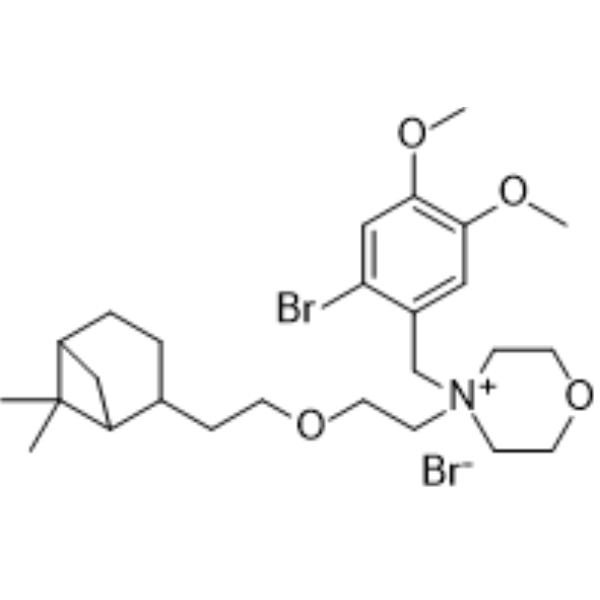
-
- HY-B1806A
-
|
Pathilon chloride
|
mAChR
|
Neurological Disease
Inflammation/Immunology
|
|
Tridihexethyl (Pathilon) chloride is an orally active anticholinergic agent and mAChR antagonist, shows activities of antimuscarinic and anticholinergic. Tridihexethyl chloride shows pronounced antispasmodic and antisecretory effects on the gastrointestinal tract. Tridihexethyl chloride can be used in studies of peptic ulcer disease and acquired nystagmus .
|
-
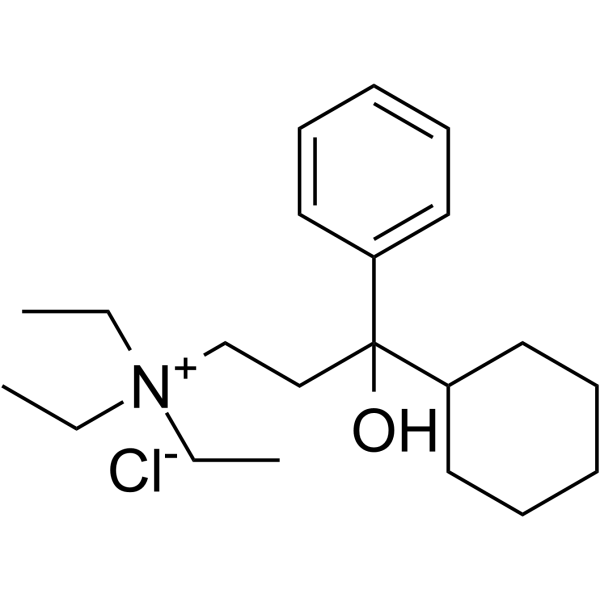
-
- HY-P1179
-
|
|
Guanylate Cyclase
Endogenous Metabolite
|
Endocrinology
Cancer
|
|
Guanylin(human), a 15-amino acid peptide, is an endogenous intestinal guanylate cyclase activator. Guanylin(human) is mainly found in gastrointestinal tract which regulates electrolytead water transport in intestinal and renal epithelia through cyclic GMP-dependent mechanism .
|
-

-
- HY-B0455S
-
|
|
Isotope-Labeled Compounds
|
Inflammation/Immunology
|
|
Lomefloxacin-d5 (hydrochloride) is the deuterium labeled Lomefloxacin hydrochloride. Lomefloxacin (SC47111A) hydrochloride is a broad-spectrum quinolone antibiotic, with antimicrobial activity. Lomefloxacin hydrochloride is used for the research of respiratory tract infections, genitourinary infections, gastrointestinal infections, ENT infections, etc.[1][2].
|
-
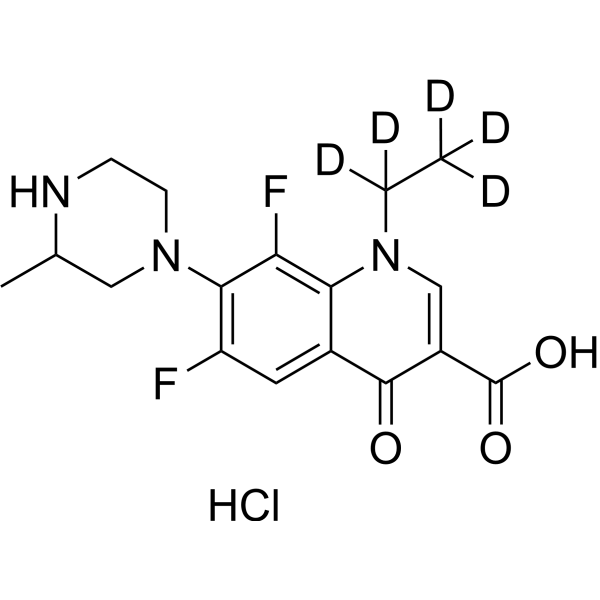
-
- HY-E70130
-
|
|
Others
|
Others
|
|
Snailase, Snail gastrointestinal is an enzyme mixture composed of more than 20 enzymes, which is often used for enzymatic hydrolysis of purified flavonoid glycosides. Snailase can be obtained from the digestive tract and includes cellulase, sucrase, hemicellulase, pectinase, polygalacturonase, protease, etc .
|
-
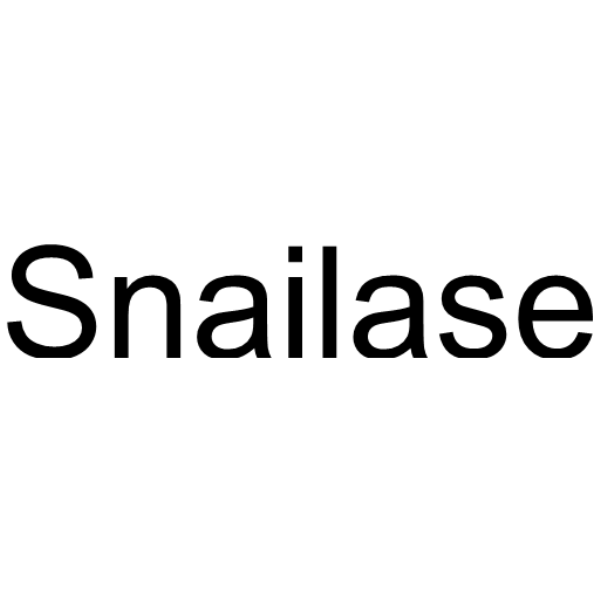
-
- HY-A0118A
-
|
NKTR-118 oxalate; AZ-13337019 oxalate
|
Opioid Receptor
|
Neurological Disease
|
|
Naloxegol oxalate (NKTR-118 oxalate; AZ-13337019 oxalate) is a μ-opioid-receptor antagonist. Naloxegol oxalate inhibits opioid binding in μ-opioid receptors in the gastrointestinal tract and effective for alleviating opioid-induced constipation .
|
-

-
- HY-P1179A
-
|
|
Guanylate Cyclase
Endogenous Metabolite
|
Metabolic Disease
|
|
Guanylin(human) TFA, a 15-amino acid peptide, is an endogenous intestinal guanylate cyclase activator. Guanylin(human) TFA is mainly found in gastrointestinal tract which regulates electrolytead water transport in intestinal and renal epithelia through cyclic GMP-dependent mechanism .
|
-
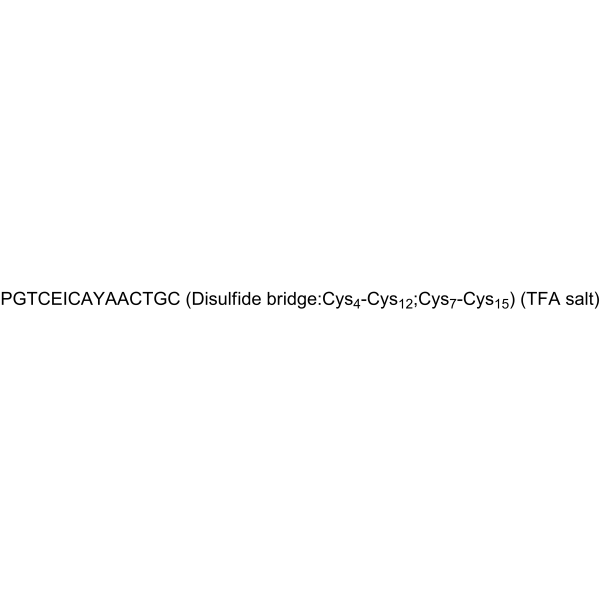
-
- HY-N7665
-
|
|
Others
|
Metabolic Disease
|
|
Prosaikogenin G, isolated from the roots of Bupleurum chinensis DC., exhibits significant inhibitory effects on rat mesangial cell proliferation induced by Ang II. Prosaikogenin G has protective action on the kidney . Prosaikogenin G is a derivative of Saikosaponin d in the gastrointestinal tract .
|
-
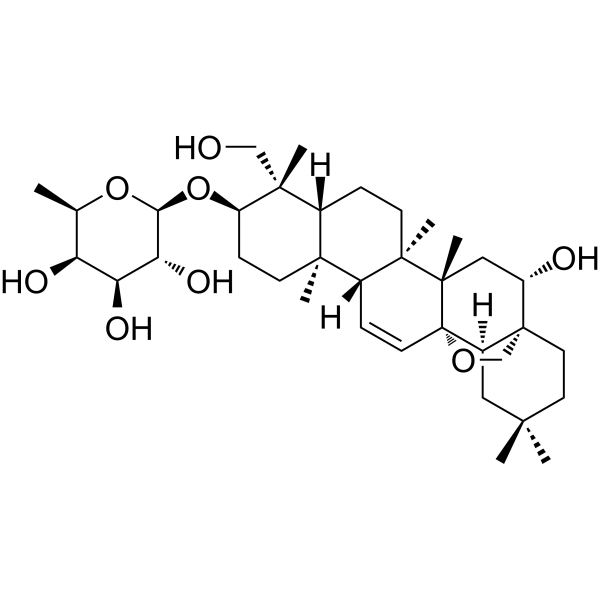
-
- HY-119972
-
|
|
Parasite
|
Infection
|
|
Diloxanide is an anti-protozoal agent and can be used for the research of asymptomatic-intestinal amebiasis caused by Entamoeba histolytica or some other protozoal infections. Diloxanide is an active luminal amebicide and hydrolyzed in the gastrointestinal tract from its proagent Diloxanide furoate (HY-B1147) .
|
-

-
- HY-N1425R
-
|
|
Others
|
Metabolic Disease
|
|
Tiliroside (Standard) is the analytical standard of Tiliroside. This product is intended for research and analytical applications. Tiliroside, a glycosidic flavonoid, possesses anti-diabetic activities. Tiliroside is a noncompetitive inhibitor of α-amylase with a Ki value of 84.2? μM. Tiliroside inhibits carbohydrate digestion and glucose absorption in the gastrointestinal tract .
|
-
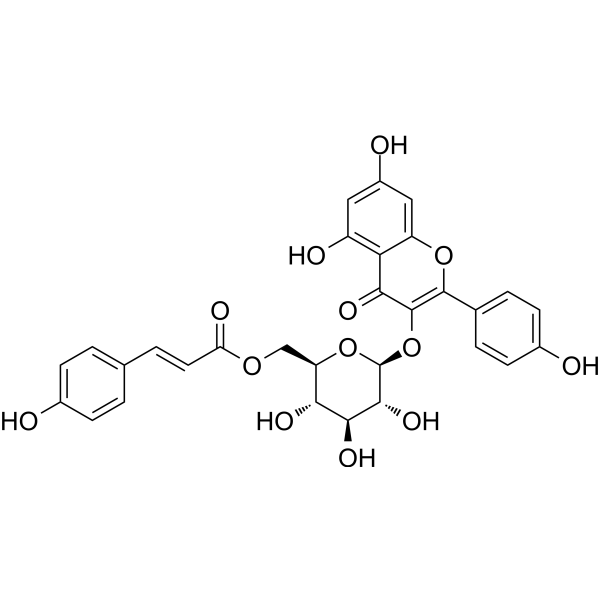
-
- HY-101122
-
|
|
|
|
|
LX2761 is chemically stable and potent inhibitor against sodium-dependent glucose cotransporter 1 (SGLT1) and SGLT2 in vitro with IC50s of 2.2 nM and 2.7nM for hSGLT1 and hSGLT2, but displays specific SGLT1 inhibition in the gastrointestinal (GI) tract .
|
-
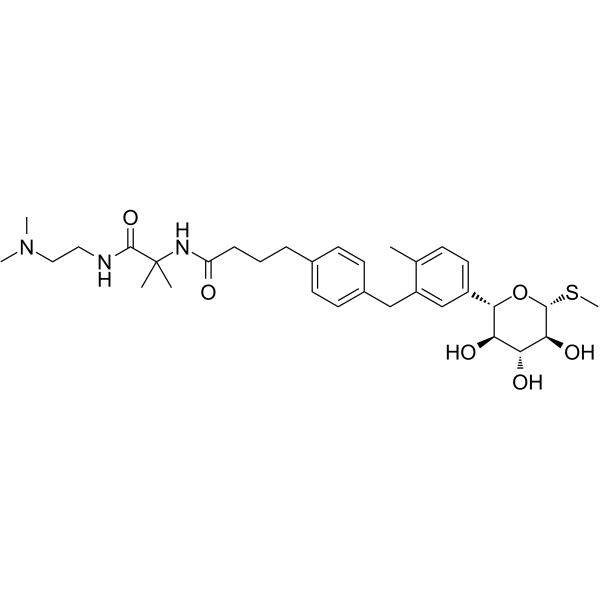
-
- HY-103146
-
|
|
5-HT Receptor
|
Neurological Disease
|
|
GR125487 sulfamate is an orally active and selective antagonist of 5-HT4R. GR125487 sulfamate effectively blocks the cognition enhancing effect. GR125487 sulfamate can be used to study memory disorders, gastrointestinal disorders, mood disorders and urinary tract dysfunction .
|
-

-
- HY-111613S
-
|
|
Isotope-Labeled Compounds
Calcium Channel
|
Others
|
|
Pinaverium bromide-d4 is deuterium labeled Pinaverium bromide. Pinaverium bromide is an L-type calcium channel blocker with selectivity for the gastrointestinal tract, effectively relieves pain, diarrhea and intestinal discomfort, provides good therapeutic efficacies without significant adverse effects on Irritable bowel syndrome (IBS) patients[1].
|
-
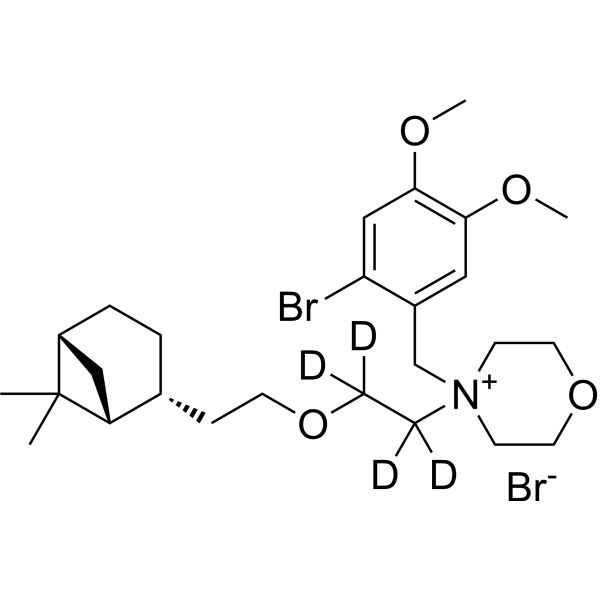
-
- HY-A0118AS
-
|
|
Isotope-Labeled Compounds
Opioid Receptor
|
Neurological Disease
|
|
Naloxegol-d5 (oxalate) is deuterium labeled Naloxegol (oxalate). Naloxegol oxalate (NKTR-118 oxalate; AZ-13337019 oxalate) is a μ-opioid-receptor antagonist. Naloxegol oxalate inhibits opioid binding in μ-opioid receptors in the gastrointestinal tract and effective for alleviating opioid-induced constipation[1][2].
|
-
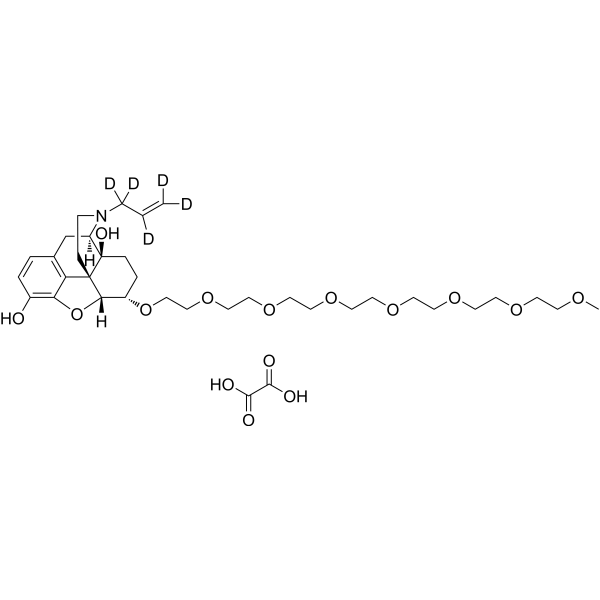
-
- HY-118189
-
|
|
Prostaglandin Receptor
|
Inflammation/Immunology
|
|
Misoprostol acid is an active metabolite of Misoprostol. Misoprostol is a synthetic analogue of prostaglandin E1 (PGE1), extensively absorbed, and undergoes rapid de-esterification to Misoprostol acid in the gastrointestinal tract after oral administration. Misoprostol can be used for non-steroidal anti-inflammatory drug-induced (NSAID) gastric ulcers . Misoprostol is an oral agent used to induce labor .
|
-
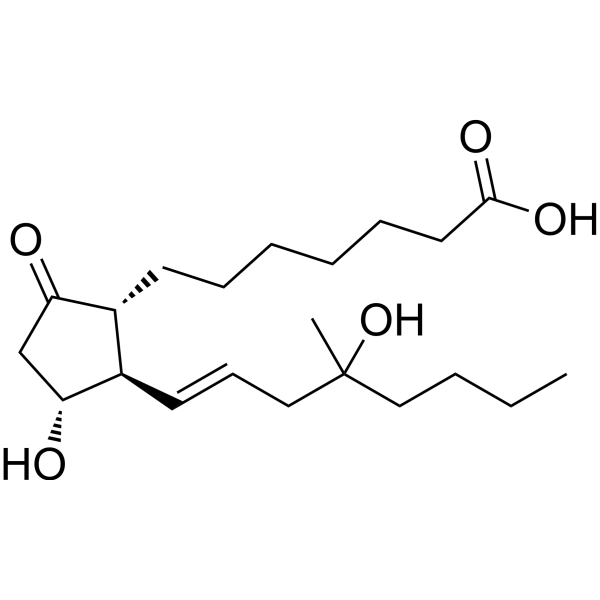
-
- HY-B0035S2
-
-

-
- HY-B1339
-
|
Dicycloverine hydrochloride
|
mAChR
|
Neurological Disease
|
|
Dicyclomine hydrochloride is a potent and orally active muscarinic cholinergic receptors antagonist. Dicyclomine hydrochloride shows high affinity for muscarinic M1 receptor subtype (Ki=5.1 nM) and M2 receptor subtype (Ki=54.6 nM) in brush-border membrane and basal plasma membranes, respectively . Dicyclomine is an antispasmodic agent and relieves smooth muscle spasm of the gastrointestinal tract in vivo .
|
-
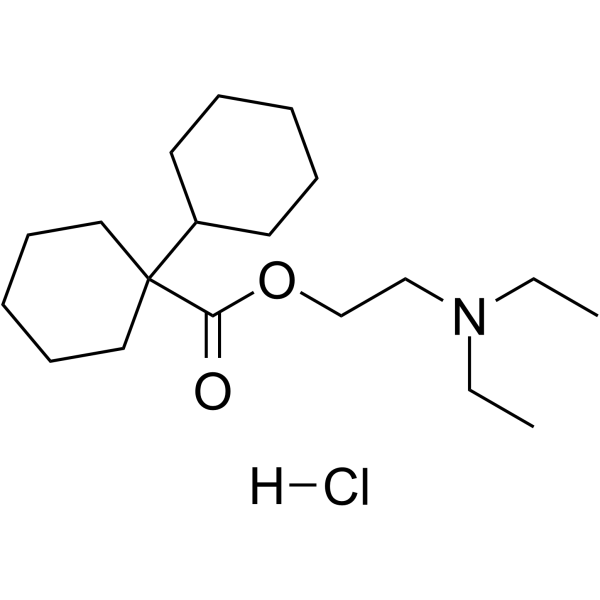
-
- HY-B1156
-
|
Cefradine; SQ-11436
|
Bacterial
Antibiotic
TOPK
|
Infection
Inflammation/Immunology
|
|
Cephradine (Cefradine) is a broad-spectrum and orally active cephalosporin. Cephradine is active against both gram-positive and gram-negative pathogens. Cephradine is effective in eradicating most penicillinase-producing organisms. Cephradine has been used in the research of genitourinary, gastrointestinal and respiratory tract infections, and in infections of the skin and soft tissues. Cephradine blocks solar-ultraviolet induced skin inflammation through direct inhibition of TOPK .
|
-
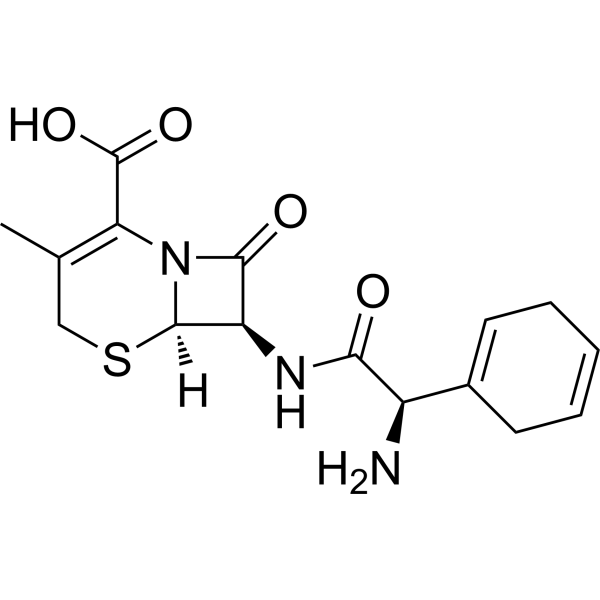
-
- HY-B1339A
-
|
Dicycloverine
|
mAChR
|
|
|
Dicyclomine (Dicycloverine) is a potent and orally active muscarinic cholinergic receptors antagonist. Dicyclomine (Dicycloverine) shows high affinity for muscarinic M1 receptor subtype (Ki=5.1 nM) and M2 receptor subtype (Ki=54.6 nM) in brush-border membrane and basal plasma membranes, respectively . Dicyclomine is an antispasmodic agent and relieves smooth muscle spasm of the gastrointestinal tract in vivo .
|
-
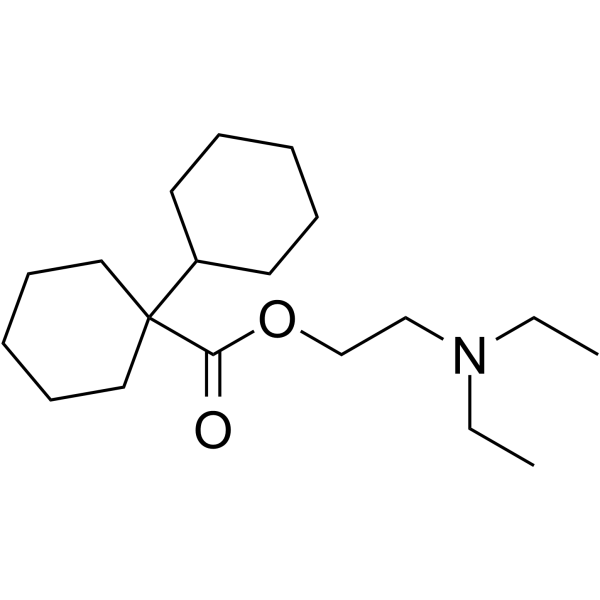
-
- HY-118189S
-
|
|
Isotope-Labeled Compounds
Prostaglandin Receptor
|
Inflammation/Immunology
|
|
Misoprostol acid-d5 is deuterium labeled Misoprostol acid. Misoprostol acid is an active metabolite of Misoprostol. Misoprostol is a synthetic analogue of prostaglandin E1 (PGE1), extensively absorbed, and undergoes rapid de-esterification to Misoprostol acid in the gastrointestinal tract after oral administration. Misoprostol can be used for non-steroidal anti-inflammatory drug-induced (NSAID) gastric ulcers[1]. Misoprostol is an oral agent used to induce labor[2].
|
-

-
- HY-128449
-
|
Cefradine monohydrate
|
Bacterial
Antibiotic
TOPK
|
Infection
Inflammation/Immunology
|
|
Cephradine (Cefradine) monohydrate is a broad-spectrum and orally active cephalosporin. Cephradine monohydrate is active against both grampositive and gram-negative pathogens and effective in eradicating most penicillinase-producing organisms known to be resistant to penicillin G, penicillin V, and ampicillin. Cephradine monohydrate has been used in the research of genitourinary, gastrointestinal and respiratory tract infections, and in infections of the skin and soft tissues. Cephradine monohydrate blocks solar-ultraviolet induced skin inflammation through direct inhibition of TOPK .
|
-

-
- HY-B1339AS
-
|
Dicycloverine-d4
|
mAChR
|
|
|
Dicyclomine-d4 is the deuterium labeled Dicyclomine[1]. Dicyclomine (Dicycloverine) is a potent and orally active muscarinic cholinergic receptors antagonist. Dicyclomine (Dicycloverine) shows high affinity for muscarinic M1 receptor subtype (Ki=5.1 nM) and M2 receptor subtype (Ki=54.6 nM) in brush-border membrane and basal plasma membranes, respectively[2]. Dicyclomine is an antispasmodic agent and relieves smooth muscle spasm of the gastrointestinal tract in vivo[3].
|
-

- HY-P2797
-
|
AMCase
|
Bacterial
|
Metabolic Disease
Inflammation/Immunology
|
|
Chitinase (EC 3.2.1.14) has partial lysozyme activity and is widely found in bacteria, fungi, animals and some plants. Chitinase belongs to the glycosyl hydrolase family. Chitinase catalyzes chito-oligosaccharide hydrolysis. Chitinases also can serve as prognostic biomarkers of disease progression. Chitinase can be used in the research of pathogenesis of various human fibrotic and inflammatory disorders, particularly those of the lung (idiopathic pulmonary fibrosis, chronic obstructive pulmonary disease, sarcoidosis, and asthma) and the gastrointestinal tract (inflammatory bowel diseases (IBDs) and colon cancer) .
|
-

| Cat. No. |
Product Name |
Type |
-
- HY-B2196
-
|
|
Native Proteins
|
|
Gastric mucin is a large glycoprotein which is thought to play a major role in the protection of the gastrointestinal tract from acid, proteases, pathogenic microorganisms, and mechanical trauma.
|
-
- HY-P3021
-
|
|
Biochemical Assay Reagents
|
|
Human milk lysozyme is the lysozyme found in human milk. Human milk lysozyme is thought to be a key defense factor in protecting the gastrointestinal tract of newborns against bacterial infection .
|
| Cat. No. |
Product Name |
Target |
Research Area |
-
- HY-P2636
-
|
Prepro CCK Fragment V-9-M
|
Peptides
|
Metabolic Disease
|
|
Cholecystokinin Precursor (24-32) (rat) is a cholecystokinin precursor that can be expressed in the heart, lungs, and kidneys as well as in the gastrointestinal tract and brain. Cholecystokinin is a brain-gut peptide that stimulates gallbladder contraction and pancreatic exocrine secretion and also acts as a neurotransmitter .
|
-
- HY-P2793
-
|
|
Peptides
|
Neurological Disease
|
|
Uperolein is a physalaemin-like endecapeptide, produced in the skin of Uperoleia rugosa and Uperoleia marmorata. Uperolein has a spasmodic effect on both the gastrointestinal tract and longitudinal muscles .
|
-
- HY-P1179
-
|
|
Guanylate Cyclase
Endogenous Metabolite
|
Endocrinology
Cancer
|
|
Guanylin(human), a 15-amino acid peptide, is an endogenous intestinal guanylate cyclase activator. Guanylin(human) is mainly found in gastrointestinal tract which regulates electrolytead water transport in intestinal and renal epithelia through cyclic GMP-dependent mechanism .
|
-
- HY-P1179A
-
|
|
Guanylate Cyclase
Endogenous Metabolite
|
Metabolic Disease
|
|
Guanylin(human) TFA, a 15-amino acid peptide, is an endogenous intestinal guanylate cyclase activator. Guanylin(human) TFA is mainly found in gastrointestinal tract which regulates electrolytead water transport in intestinal and renal epithelia through cyclic GMP-dependent mechanism .
|
| Cat. No. |
Product Name |
Category |
Target |
Chemical Structure |
| Cat. No. |
Product Name |
Chemical Structure |
-
- HY-B0035S
-
|
|
|
Sulfamethazine-d4 is a deuterium labeled Sulfamethazine (Sulfadimidine). Sulfamethazine is an antimicrobial that is widely used to treat and prevent various animal diseases (such as gastrointestinal and respiratory tract infections)[1][2].
|
-

-
- HY-B0455S
-
|
|
|
Lomefloxacin-d5 (hydrochloride) is the deuterium labeled Lomefloxacin hydrochloride. Lomefloxacin (SC47111A) hydrochloride is a broad-spectrum quinolone antibiotic, with antimicrobial activity. Lomefloxacin hydrochloride is used for the research of respiratory tract infections, genitourinary infections, gastrointestinal infections, ENT infections, etc.[1][2].
|
-

-
- HY-14153AS
-
|
|
|
Tegaserod- 13C,d3 (maleate) is the 13C- and deuterium labeled Tegaserod (maleate). Tegaserod maleate is a selective 5-HT4 receptor partial agonist and a 5-HT2B receptor antagonist. Tegaserod maleate exhibits a promotile effect throughout the gastrointestinal (GI) tract[1][2][5].
|
-

-
- HY-111613S
-
|
|
|
Pinaverium bromide-d4 is deuterium labeled Pinaverium bromide. Pinaverium bromide is an L-type calcium channel blocker with selectivity for the gastrointestinal tract, effectively relieves pain, diarrhea and intestinal discomfort, provides good therapeutic efficacies without significant adverse effects on Irritable bowel syndrome (IBS) patients[1].
|
-

-
- HY-A0118AS
-
|
|
|
Naloxegol-d5 (oxalate) is deuterium labeled Naloxegol (oxalate). Naloxegol oxalate (NKTR-118 oxalate; AZ-13337019 oxalate) is a μ-opioid-receptor antagonist. Naloxegol oxalate inhibits opioid binding in μ-opioid receptors in the gastrointestinal tract and effective for alleviating opioid-induced constipation[1][2].
|
-

-
- HY-B0035S2
-
|
|
|
Sulfamethazine- 13C6 is a 13C-labeled n-Acetyl-s-methyl-l-cysteine[1].
|
-

-
- HY-118189S
-
|
|
|
Misoprostol acid-d5 is deuterium labeled Misoprostol acid. Misoprostol acid is an active metabolite of Misoprostol. Misoprostol is a synthetic analogue of prostaglandin E1 (PGE1), extensively absorbed, and undergoes rapid de-esterification to Misoprostol acid in the gastrointestinal tract after oral administration. Misoprostol can be used for non-steroidal anti-inflammatory drug-induced (NSAID) gastric ulcers[1]. Misoprostol is an oral agent used to induce labor[2].
|
-

-
- HY-B1339AS
-
|
|
|
Dicyclomine-d4 is the deuterium labeled Dicyclomine[1]. Dicyclomine (Dicycloverine) is a potent and orally active muscarinic cholinergic receptors antagonist. Dicyclomine (Dicycloverine) shows high affinity for muscarinic M1 receptor subtype (Ki=5.1 nM) and M2 receptor subtype (Ki=54.6 nM) in brush-border membrane and basal plasma membranes, respectively[2]. Dicyclomine is an antispasmodic agent and relieves smooth muscle spasm of the gastrointestinal tract in vivo[3].
|
-

Your information is safe with us. * Required Fields.
Inquiry Information
- Product Name:
- Cat. No.:
- Quantity:
- MCE Japan Authorized Agent:



























































